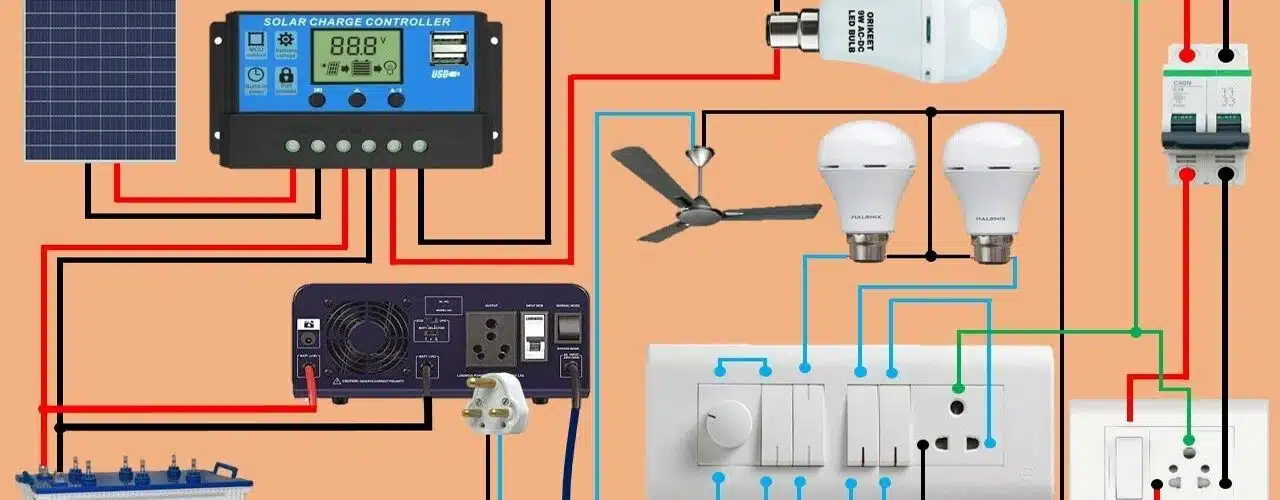Table of Contents
How to Connect Solar Panel to Home Inverter?
How To Connect Solar Panel To Home Inverter? Connecting solar panels to a battery and inverter allows you to store the energy they produce, and then use it at night or during cloudy weather. This can help reduce your reliance on traditional electricity sources and save you money on utility bills.
Solar panels and batteries have different voltages, so they cannot be connected directly to one another. Instead, you must have some sort of regulator or controller between them.
Battery Charger:
To run a solar system, it must be connected to a battery and an inverter. These components are necessary for harnessing renewable energy to power your home and reduce your carbon footprint. In addition, the solar panel must be oriented to the sun at a reasonable angle to get the most energy. This method of solar power is an excellent way to offset the cost of fossil fuels and save money on your utility bills.
The first step is getting a solar panel with the right watt rating for your setup. The more watts the solar panel has, the more power it can generate. Then you need to purchase a charge controller, which helps to manage the amount of electricity going into the battery. Some solar panels come with a charge controller, but you can also get one separately.
When connecting the solar panel to the battery, make sure to use a fuse to protect the wires. This will help to prevent damage caused by overheating or shorting out. It is important to remember that the positive and negative terminals of the battery must match the positive and negative terminals of the solar panel.
When stringing solar panels together, you can connect them in either a series or parallel configuration. A series connection increases the voltage, while a parallel connection keeps the voltage and amps steady. When determining the correct connections, it is best to consult a professional or do some research on your own.
Inverter:
Knowing the process for connecting solar panels to a home inverter is essential for any DIY installer. However, it should be noted that working with electricity can be dangerous and the process should always be carried out with great care. Always remove power from the distribution board before starting work, and be sure to use proper wire connections. Loose connections can lead to electrical sparks and fires. Also, be sure to ensure that the area around the inverter is well-ventilated.
You should also be familiar with the various wiring configurations that are available for solar panels. This includes stringing them in series and parallel. A series connection increases the voltage, while a parallel connection keeps the voltage at the same level but adds current. In addition, you should understand the differences between these different configurations and how they affect the amount of energy produced.
Once you have the solar panel, battery bank, and inverter connected, you’re ready to produce and use renewable energy. The next step is to determine the best location for your solar panel system and make sure that it’s properly oriented. This will allow it to capture the most sunlight throughout the day. It’s also a good idea to keep the solar panel away from shady areas, as this can reduce its efficiency.
Switches:
Lastly, the switch (or switches) that connect the solar panels to the battery charger and inverter must be wired correctly. This step involves working with electrical wiring, so it’s a good idea to hire a professional solar installer or electrician to do the job. This will ensure that your solar panel system is safe and code-compliant.
Solar panel installation is a simple process that can reduce your dependence on traditional energy sources and lower your electricity bills. By connecting your solar panels to a battery bank and inverter, you can use renewable energy during the night and reduce your carbon footprint.
Before you start connecting your solar panels to the inverter, make sure that you’re using a quality battery and inverter that will meet your energy needs. Additionally, it’s important to keep in mind that you will need to connect the inverter to a power source, such as a circuit breaker or disconnect switch.
Solar panels can be connected in either a series or parallel configuration. A series connection is more common because it offers higher voltage output. However, a problem with one of the solar panels in a series connection can cause the entire circuit to fail. A parallel connection, on the other hand, allows the currents to add up without affecting each other. A parallel connection also provides greater flexibility with shaded or covered solar panels.
Wiring:
To ensure that you’re getting the most out of your solar system, you’ll need to make sure that all connections are properly done. This includes wiring the battery and inverter correctly, as well as ensuring that all components are securely mounted. Ideally, you should use low-resistance wires that can carry high current and voltage levels without the risk of sparking or frying. The wiring must also be insulated and secured to prevent any tripping, overheating, or shorting.
You should also determine the voltage and current ratings of your solar panels. Then, choose an inverter that is compatible with these parameters. The inverter should be able to handle the maximum output of your solar panel system, and it must also be compatible with your battery type. You can choose to use a single-string inverter or multiple inverters for your home, depending on the number of solar panels you have.
The solar panels and inverter need to be connected to a controller that regulates the flow of electricity between the solar panels and the batteries. This will help prevent damage to the solar panel and inverter. It will also protect the batteries from overcharging or discharging. In addition, a circuit breaker is required to protect the inverter from power surges.






Add comment